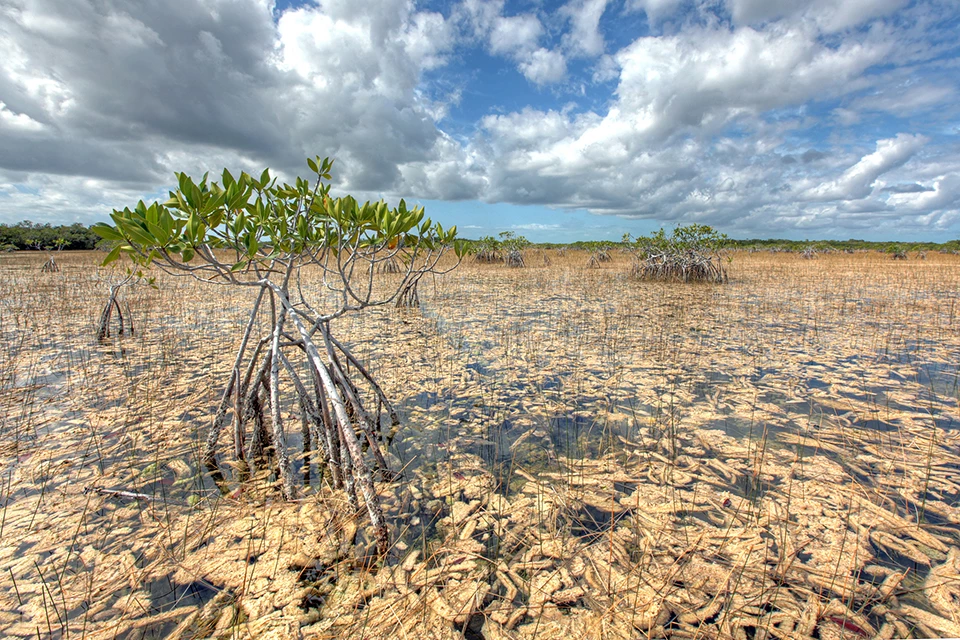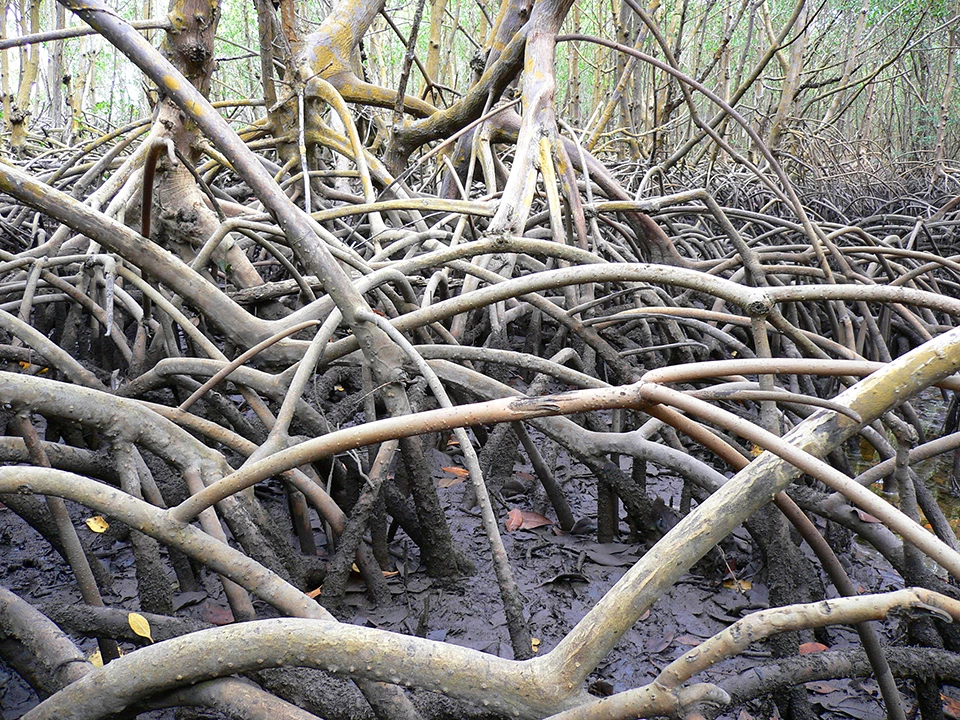Part of a series of articles titled Parks in Science History.
Article
Odum's 1960s Everglades Studies Shape The Science of Ecology
This article, and others in the series "Parks in Science History", was written by a graduate student at the University of Maryland. The articles highlight the roles that national parks have played in the history of science and, therefore, the world's intellectual heritage. More articles and videos will be produced in the future.

NPS Photo / Jimi Sadle
Odum learned something unexpected - dead plant matter (the stuff you might feel inclined to rake up and get rid of) is an incredible energy source and the engine behind the region’s productivity. Indeed, wetlands are worth preserving!
Odum collected the first field measurements of nutrient and energy flow through an estuary dominated by mangroves. His observations showed that economically important fish species thrive on a food web built up from decaying plant matter (called “detritus”). Ecologists now fully accept Odum’s conclusions. His research made significant early contributions to the conservation of wetlands and to the science of ecosystem ecology, a field that was emerging at the time and was championed by none other than Odum’s father, Eugene Odum, and uncle, Howard Odum.

NPS Photo / G. Gardner
New ideas do not start in a vacuum but rather incubate and develop when a scientist is exposed to prevailing ideas and experiences. The influences on William Odum were many.
The ecosystem concept was actually coined thirty years prior to Odum’s research in 1935 by Sir Arthur Tansley at Oxford University. Tansley argued that the ecosystem is the basic unit of ecology and is composed of interacting organisms and their physical and chemical environment. The food web concept, which relates species to one another by what food they eat, was popularized about the same time by Charles Elton, also at Oxford. The two concepts came together in 1942 when another young graduate student, Raymond Lindeman, showed that decaying plant matter, which he fondly called “ooze”, was the foundation of a lake food web in Minnesota. Likewise, Rezneat Darnell’s 1961 study on Lake Pontchartrain and John Teal’s 1962 study on salt marshes of Sapelo Island, Georgia, emphasized that detritus is a major source of energy for the ecosystem.
Odum’s collaborator Eric Heald also needs to be acknowledged at this point. Contrary to what one might expect, science is typically not an orderly process. Rather, science tends to twist and turn in unexpected ways and often offers as many surprises as disappointments. Indeed, science is about learning something new and that can be an arduous journey. Collaborators share in this journey and bring new perspectives and ideas to a project. Heald was such as person to Odum.
Odum’s work in the Everglades did not only help advance the science of ecology. It also helped change scientists’, manager’s and the broader public’s perception of wetlands and why they are valuable and deserve protection.
Odum included in his dissertation a letter that was sent by a prominent scientist to the Dade County (Florida) Public Works Department, stating that most of the “mangrove-covered land is in fact a form of waste land. It does not make a significant contribution to the productivity of Biscayne Bay or associated waters.” Careful science at Florida Everglades National Park refuted this hypothesis and led the way to the preservation of mangroves, whose tangled and bizarre looking tree roots provide shelter and nursery grounds for fishes and whose leafy detritus provides energy for a productive and diverse food web.

NPS Photo / David Grimes
References
Odum, W.E. (1970). Pathways of Energy Flow in a South Florida Estuary. Dissertation. University of Miami
Odum, W.E., Heald E.J. (1972) Trophic analysis of an estuarine mangrove community. Bulletin of Marine Science 22:671-738
Odum W.E., Heald E.J. (1975) Mangrove Forests and Aquatic Productivity. In: Hasler A.D. (eds) Coupling of Land and Water Systems. Ecological Studies (Analysis and Synthesis), vol 10. Springer, Berlin, Heidelberg
Last updated: June 23, 2020
